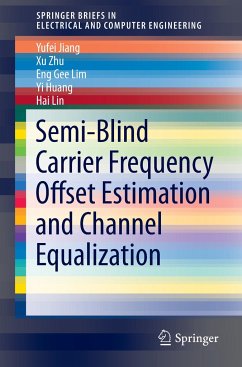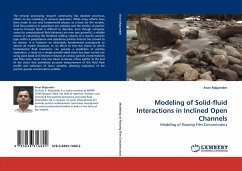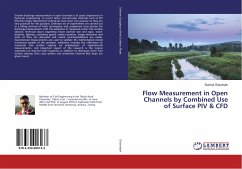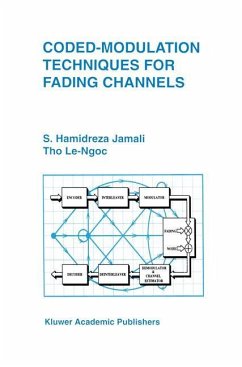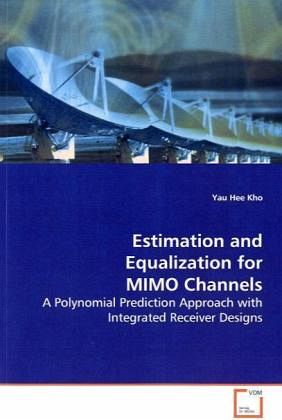
Estimation and Equalization for MIMO Channels
A Polynomial Prediction Approach with Integrated Receiver Designs
Versandkostenfrei!
Versandfertig in 6-10 Tagen
45,99 €
inkl. MwSt.

PAYBACK Punkte
23 °P sammeln!
Modern wideband wireless communication systems thatallow ubiquitous, 24-7, multimedia-rich transmissionrequire state-of-the-arts technical breakthrough.Multiple-input multiple-output (MIMO) systems havebeen highly regarded as one such important technicalenabler. In reality, however, many challenges remainto be solved before the actual potentials can berealized. This book focuses on the latest research onMIMO channel estimation and equalization. Two typesof spatially-multiplexed MIMO receiver structure withintegrated channel estimation and tracking areintroduced. One is a symbol-by-symbol recei...
Modern wideband wireless communication systems that
allow ubiquitous, 24-7, multimedia-rich transmission
require state-of-the-arts technical breakthrough.
Multiple-input multiple-output (MIMO) systems have
been highly regarded as one such important technical
enabler. In reality, however, many challenges remain
to be solved before the actual potentials can be
realized. This book focuses on the latest research on
MIMO channel estimation and equalization. Two types
of spatially-multiplexed MIMO receiver structure with
integrated channel estimation and tracking are
introduced. One is a symbol-by-symbol receiver using
a vector decision feedback equalizer (DFE), and the
other is a sequence-based receiver using a
partitioned Viterbi algorithm (PVA) which approaches
the performance of maximum likelihood sequence
estimation (MLSE). A polynomial prediction based
channel estimator, known as the vector generalized
recursive least squares (VGRLS) algorithm, together
with a reduced complexity form, are presented. This
book is suitable for graduate-level students, and is
an essential read for engineers, researchers and
academics working on MIMO systems.
allow ubiquitous, 24-7, multimedia-rich transmission
require state-of-the-arts technical breakthrough.
Multiple-input multiple-output (MIMO) systems have
been highly regarded as one such important technical
enabler. In reality, however, many challenges remain
to be solved before the actual potentials can be
realized. This book focuses on the latest research on
MIMO channel estimation and equalization. Two types
of spatially-multiplexed MIMO receiver structure with
integrated channel estimation and tracking are
introduced. One is a symbol-by-symbol receiver using
a vector decision feedback equalizer (DFE), and the
other is a sequence-based receiver using a
partitioned Viterbi algorithm (PVA) which approaches
the performance of maximum likelihood sequence
estimation (MLSE). A polynomial prediction based
channel estimator, known as the vector generalized
recursive least squares (VGRLS) algorithm, together
with a reduced complexity form, are presented. This
book is suitable for graduate-level students, and is
an essential read for engineers, researchers and
academics working on MIMO systems.



